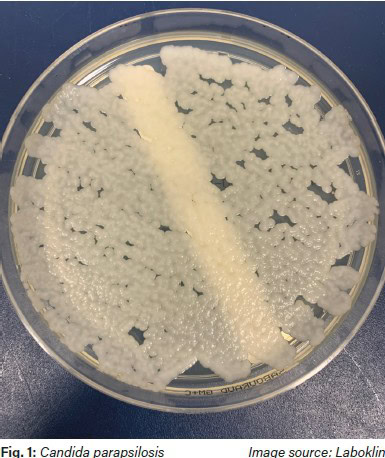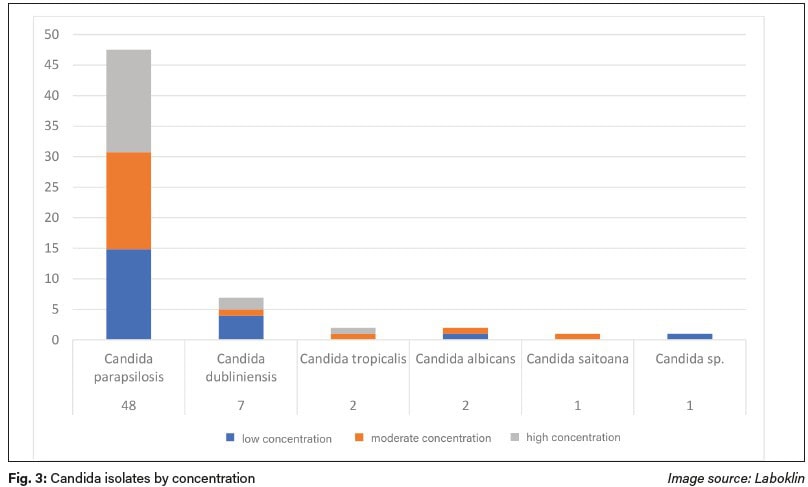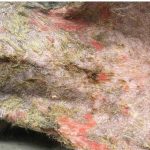In breeding mares, infections of the genital tract can primarily lead to infertility, abortions, and the birth of weak foals with septicaemia. For this reason, bacteriological examination of cervical or uterine swabs, is required before a mare is inseminated, whether by natural or artificial insemination. In addition to bacteriological culture, it may also be useful to test for possible yeast and mould infestations.
Protective Mechanisms Against Infections
In addition to physical barriers such as vulvar closure, the vestibulovaginal sphincter, and the cervix, local immune mechanisms also prevent the colonisation of (facultative) pathogenic micro-organisms. If these physical barriers are not intact, for example, after a difficult labour, a pneumvagina or urine retention can occur. Pathogens can therefore colonise more easily. Anatomical features such as large hanging uterine horns, defects in the myometrium, a hanging ligamentum latum uteri, and degenerative changes in the vascular supply and lymphatic drainage can negatively impact the self-cleaning of the uterine mucosa.
Immune Defence
After experimental infection with Streptococcus equi ssp. zooepidemicus, intact mares were able to eliminate the pathogen within a few hours. In older mares that had remained sterile for a longer period of time, the elimination of the introduced pathogens Streptococcus equi ssp. zooepidemicus and Pseudomonas aeruginosa took considerably longer.

Humoral Defence Mechanisms
The dominant immunoglobulins, secretory IgG and IgA, are produced in the endometrium. The concentration of immunoglobulins differs only marginally between mares that are susceptible to endometritis and those that
prove to be immune to it. Mares that were susceptible to endometritis were less efficient at eliminating introduced streptococci with opsonins during the acute infection and were therefore less able to initiate their elimination.
Cellular Immune Response
Chemotactically, neutrophils can react to bacteria, endotoxins, sperm, semen diluents, and even sterile water, with no significant difference between mares that are susceptible to endometritis and those that are not. The cellular stimulation after mating can lead to a permanent inflammatory reaction in some mares due to the foreign protein, known as permanent mating-induced endometritis (PMIE). This persistent inflammatory reaction, with an increased occurrence of neutrophils, is further stimulated by the presence of bacteria. It is initiated by a local reaction to the primary antigen, with local production of inflammatory mediators, particularly prostaglandin E2, and the increased influx of neutrophils along with serum proteins. The phagocytic activity of the neutrophils is highest during oestrus.
Diagnosis of Fungal Infections
Cytological samples (biopsies of the uterine mucosa are more reliable) provide indications of the cycle status and mucosal formation, as well as signs of inflammation. Bacteria can be detected directly under the microscope without further identification of the species. If the inflammatory cell profile suggests an infection with fungi, special stains can be used to determine whether it is a yeast or a fungi. For the culture examinations, the sample should be taken from the cervix or uterus using a sterile speculum, if possible. Both bacteriological and mycological cultures can be obtained from this sample. For the mycological culture, Sabouraud dextrose agar with chloramphenicol and gentamicin is used to inhibit the bacterial flora. Incubation takes place at 36 °C for 48 hours, followed by the first reading. Negative cultures are checked again for fungal growth after a further 5 days of incubation. The yeasts and filamentous fungi are differentiated using MALDI-TOF mass spectrometry and microscopically after staining with cotton blue lactophenol solution.

Results of Our Own Investigations
Out of 1,365 mycologically examined cervical and uterine swabs, 7.4% (n = 101) showed positive growth on the fungal culture medium. Of these, yeasts of the species Candida spp. were isolated in 61% of cases. In the differentiation, Candida parapsilosis (Fig. 1) dominated the Candida complex with 46%, while 16% and 17% exhibited moderate or high levels of this yeast (Fig. 2 and 3). Other Candida species were isolated only sporadically. Filamentous fungi, including Aspergillus and Penicillium species, as well as black fungi such as Alternaria alternata, were only cultivated in isolated cases, usually at low levels.
Evaluation
In addition to the detection of yeasts and fungi, the clinical findings must also be considered. Yeast or fungal endometritis is suspected if chronic endometritis does not improve or only improves temporarily after antibiotic treatment. A highly distended uterus with cloudy secretion is often present. The cervical mucosa and the endometrium appear distinctly inflamed, with a dirty red discolouration. Low levels of yeasts without clinical changes are generally negligible. The detection of a low level of fungi is more likely to be interpreted as contamination during sample collection. In many cases, endometritis caused by yeasts or fungi is preceded by intrauterine treatment with antibiotics to treat an inflammation caused by bacteria. The applied antibiotics can damage the mucous membrane, while yeasts and fungi can be introduced from outside during intrauterine treatment. There is also discussion about whether the use of semen thinners containing antibiotics can lead to a fungal manifestation.

Therapy
Lavage is used to clean the uterine lumen and flush out cellular debris, such as dead neutrophils, along with microorganisms and other inflammatory products. The fluid induces uterine contractions and cleansing due to temporary mucosal irritation. For irrigation, warmed balanced electrolyte solutions such as Ringer’s or saline solutions are used. Mild antiseptics, such as povidone-iodine or chlorhexidine, can be added to these solutions. Care must be taken to ensure that they are used in a diluted form; otherwise, severe inflammation or even mucosal necrosis may occur. Povidone-iodine solution should be used at a maximum concentration of 0.05% (5 ml of a 10% povidone-iodine solution in 1 litre of saline solution), and chlorhexidine digluconate at a maximum concentration of 0.25%. The use of dimethyl sulfoxide (DMSO) as an irritating chemical agent to remove inflamed endometrial tissue is rather questionable from an animal welfare perspective. After irrigation, the use of antimycotics can be considered. Currently, no active agent is approved for horses for systemic or intrauterine application. Various substances, such as nystatin, amphotericin B, or clotrimazole, are used intrauterinely for the treatment of fungal or yeast infections (off-label use). Nystatin, 0.5 to 2.5 million units dissolved in 100–250 ml of sterile water, is suitable for yeasts. Since it is poorly soluble in water, it must be prepared immediately before application and brought into suspension by vigorous shaking. Miconazole, 200–700 mg in 40–60 ml sterile saline solution daily for up to 10 days, is reported to be most effective against Candida.Therapy with antimycotics should be continued for at least 7–10 days. If necessary, an antimycogram can be performed to determine susceptibility to the antifungal agents.
Conclusion
Stallions that have been kept alone for long periods should also undergo a mycological examination as part of the breeding hygiene assessment. The likelihood of successfully eliminating the pathogen remains uncertain despite treatment.
Dr. Anton Heusinger
Further literature
Cafarchia C, Figueredo LA, Otranto D. Fungal diseases of horses. Vet Microbiol. 2013;167(1-2):215-234. doi: 10.1016/j.vetmic.2013.01.015 Sellon DC, Long MT, Equine infectious diseases second edition Saunders; 2013. Sielhorst J, Köhne M, Spilker K-C, Kahler A, Brekle C, Tönnisen A, Käser R, Burger D, Sieme H. Aktuelle Empfehlungen zur Diagnostik und Therapie der Endometritis bei der Stute. Pferdespiegel. 2019;22(02):75-88. doi:10.1055/a-0858-4508




